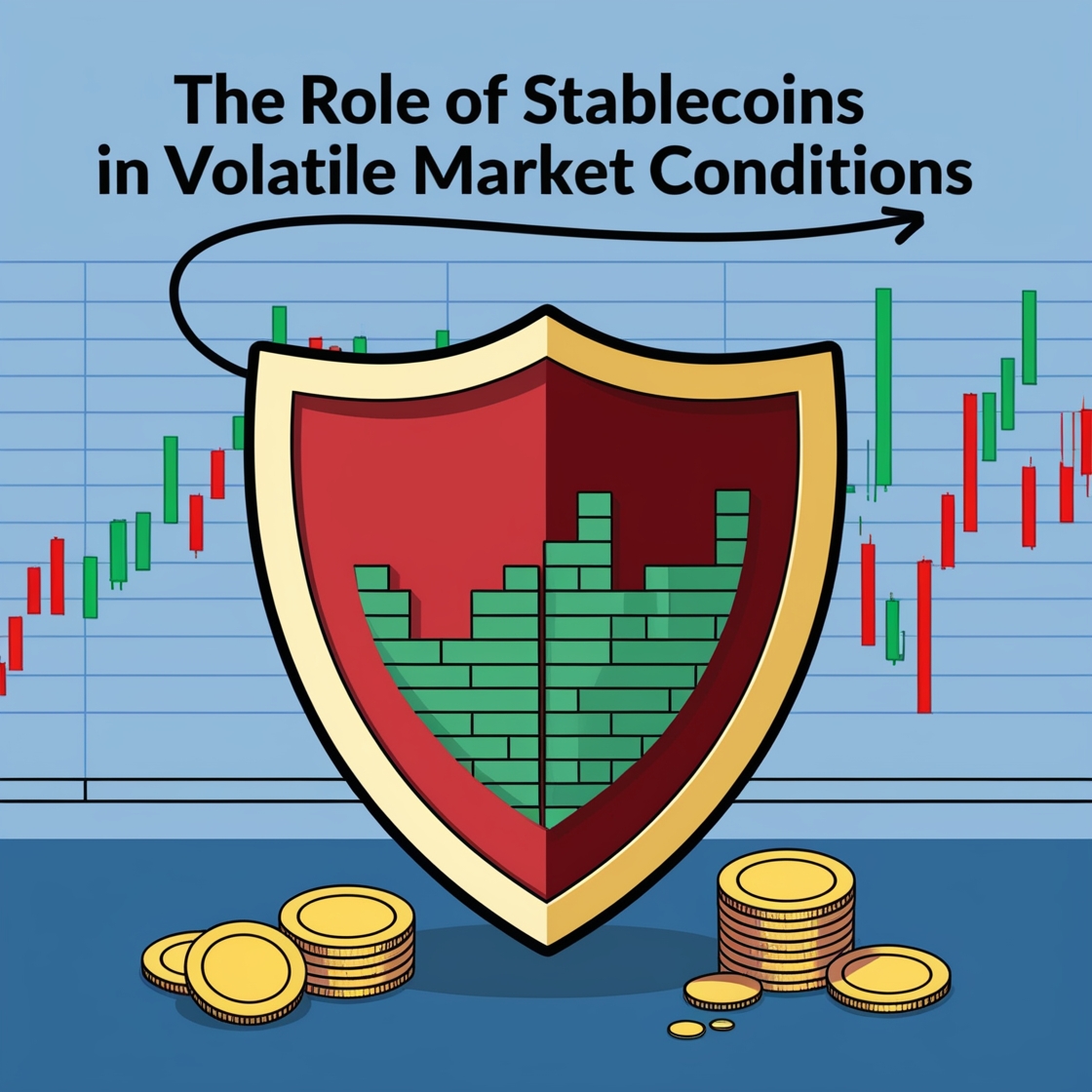Introduction
Market volatility is an inherent characteristic of the financial world, especially in the cryptocurrency market. Massive price swings can make investing both thrilling and risky. Enter stablecoins—digital assets designed to maintain a steady value. As the crypto ecosystem continues to grow, stablecoins are proving indispensable, particularly during periods of market instability. Let’s explore their crucial role in volatile market conditions and why they’ve become a cornerstone of the modern financial landscape.
What Are Stablecoins?
Definition of Stablecoins
Stablecoins are digital currencies designed to maintain a stable value by pegging their worth to an external asset, such as fiat currency, commodities, or a basket of assets. This stability makes them a reliable option in unpredictable markets.
Types of Stablecoins
- Fiat-Collateralized Stablecoins
Backed by reserves of fiat currency, these are the most common type. Examples include Tether (USDT) and USD Coin (USDC). - Crypto-Collateralized Stablecoins
Secured by other cryptocurrencies, they use over-collateralization to manage price stability. Examples include DAI. - Algorithmic Stablecoins
Not backed by reserves but maintain stability through algorithms that control supply and demand. Examples include UST (now defunct) and newer iterations.
Popular Stablecoins in Use Today
- Tether (USDT): Dominates the stablecoin market with extensive use in trading.
- USD Coin (USDC): Known for transparency and regulatory compliance.
- Binance USD (BUSD): Backed by Binance, popular in the DeFi ecosystem.
Causes of Volatility in the Crypto Market
Speculative Nature of Cryptocurrencies
The crypto market is driven by speculation, where investor sentiment can cause extreme price swings within hours.
Lack of Regulatory Clarity
Uncertainty around global crypto regulations often leads to market instability, impacting investor confidence.
Global Economic Factors
Geopolitical tensions, inflation, and monetary policy changes directly influence cryptocurrency valuations.
The Key Functions of Stablecoins During Volatility
Providing a Safe Haven for Investors
When markets dip, investors often convert volatile crypto assets into stablecoins to preserve value and mitigate losses.
Facilitating Seamless Transactions
Stablecoins eliminate the need to revert to fiat during volatile periods, allowing for quick and efficient transactions across platforms.
Enabling Efficient Trading Strategies
Traders use stablecoins as a base currency to execute strategies like arbitrage, reducing exposure to market fluctuations.
Benefits of Stablecoins in Volatile Markets
Reduced Exposure to Price Fluctuations
By maintaining a fixed value, stablecoins offer investors a refuge against wild crypto price swings.
Improved Liquidity for Traders
Stablecoins provide liquidity in the crypto market, ensuring smooth operations even during periods of high volatility.
Increased Accessibility to DeFi and Payments
In decentralized finance, stablecoins serve as a reliable medium for lending, borrowing, and payments, stabilizing user experiences.
Challenges Facing Stablecoins
Regulatory Uncertainty
Governments are still developing frameworks to govern stablecoins, causing hesitation among users and institutions.
Collateral and Reserve Transparency
Concerns about whether stablecoins are fully backed by reserves (as claimed) could undermine trust in the ecosystem.
Algorithmic Risks and Systemic Failures
Failures like the UST collapse have highlighted the risks associated with algorithmic stablecoins, emphasizing the need for robust mechanisms.
Stablecoins and the Future of Financial Stability
Bridging the Gap Between Fiat and Crypto
Stablecoins act as a bridge, enabling seamless transitions between traditional and digital finance systems.
Role in Decentralized Finance (DeFi)
Stablecoins power DeFi platforms by offering stability and reducing dependency on volatile assets for operations.
Potential Impact on Global Monetary Systems
As stablecoins gain adoption, they challenge the traditional financial systems, potentially reshaping how value is transferred globally.
Conclusion
In a world where market conditions can change in the blink of an eye, stablecoins have emerged as a critical tool for investors, traders, and institutions. Their ability to provide stability, liquidity, and accessibility ensures they remain a key component of the crypto ecosystem. However, as their role grows, addressing challenges such as regulatory clarity and transparency will be essential to unlocking their full potential.
FAQs
- How do stablecoins maintain price stability?
Stablecoins use reserves (fiat or crypto) or algorithms to peg their value to a stable asset, ensuring price consistency. - Why are stablecoins critical in volatile markets?
They offer a safe haven, reducing exposure to price fluctuations while maintaining liquidity for transactions and trading. - Are stablecoins completely safe to use?
While they reduce volatility risks, issues like regulatory uncertainty and reserve transparency require careful consideration. - How do stablecoins differ from traditional cryptocurrencies?
Unlike Bitcoin or Ethereum, stablecoins maintain a fixed value, making them more suitable for payments and hedging. - What’s the future outlook for stablecoins in the global economy?
Stablecoins are poised to play a vital role in financial innovation, bridging the gap between fiat and decentralized systems.
